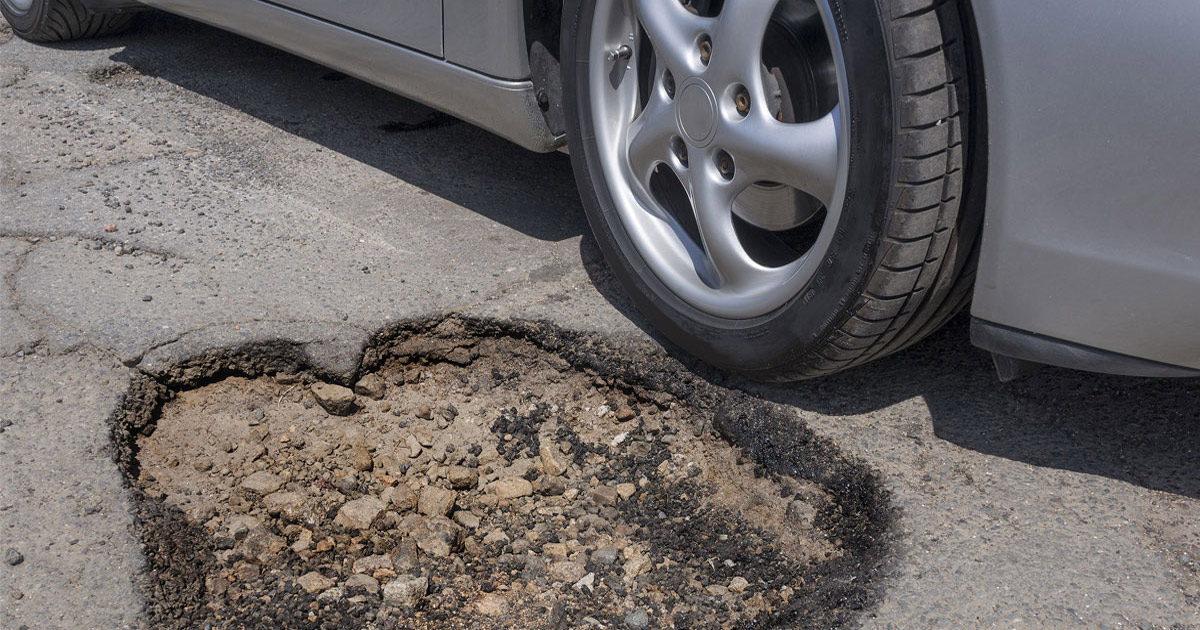Maintaining roads and bridges is a demanding job. In the northeastern United States, temperature fluctuations, snow, salt, and damage from use of snow ploughs all add to normal wear and tear to roads. Construction zones are continuously being set up to repair and/or replace sections of roadways and/or bridges. Despite best efforts, sometimes it is not possible to keep up with maintenance demands.
Governmental entities are responsible for maintaining public roads and bridges in good condition. Which particular government entity owns the road determines which one is responsible for maintenance and upkeep. The federal government, state governments, and counties and municipalities are all possible owners. Sometimes, different government entities share responsibility for maintenance and repair.
When a poor and/or unsafe road condition causes an accident, it will be important to identify ownership of the road where the accident occurred. The statute of limitations for filing a claim for an accident will vary from one governing body to the next. In addition, each jurisdiction has its own set of requirements that must be met by the injured party filing a claim.
What Causes Unsafe Road Conditions?
Landing in a pothole can result in a flat tire, bent rim, and put steering out of alignment. When encountering a pothole, the outcome can result in losing control of the vehicle and serious injury, in addition to damage to the vehicle. Potholes alone cause $3 billion in damage to drivers each year. There are other unsafe road conditions that can cause accidents, which include:
- Collapsed shoulders
- Cracked pavement
- Missing or confusing signs
- Missing barriers or guard rails
- Uncleared ice, snow, or debris
- Inadequately addressed slippery conditions
- Faded or poorly painted lines
- Unannounced changes in road surfaces
- Poorly marked or designed work zones
Unsafe conditions can cause confusion, panic, and inadequate notice to adjust speed, change lanes, or otherwise safely navigate the road. For example, if the lanes are not clearly marked due to fading, then a driver may unknowingly veer into the next lane and hit another vehicle. If signage is missing or poorly placed, a driver may be unable to slow down in time for a tight turn or may need to make a sudden maneuver in order to take an off ramp. A missing stop sign can result in a driver entering an intersection unsafely.
Making a Claim
The claim process differs depending on the particular government entity responsible for maintaining the road. Usually, there is a requirement to complete a claim filing process that must happen before a civil lawsuit can be filed. Often, the statute of limitations for filing such a claim is very short, sometimes as little as 30 days after the accident.
A claim can only be successful if it can be proven that the government entity was at-fault for the accident. Usually this requires proving negligence, although sometimes the standard is higher, such as gross negligence. To prove negligence, it must be shown that the government entity had reasonable notice of the condition, a reasonable opportunity to address it, and failed to address the proper steps, causing the accident. Failure to keep the road in good condition or to properly warn of a potentially hazardous road condition has been found to be the basis for actionable claims. Negligence can also arise if a safety-related defect in planning/executing road construction caused the accident. Designs that interfere with line-of-sight might be considered proof of negligence.
What Should I Do After a Car Accident?
Regardless of whether a government entity or other party caused an accident, there are certain steps that must be taken to ensure future claims can be substantiated. These include taking note of the:
- Area where the accident occurred and any road conditions that could have contributed to causing the accident
- Name of the road and driving direction
- Contact information of any eyewitnesses
It is always a good idea to call the police to prepare a police report. It is also recommended that the person involved in the accident contact an experienced car accident lawyer for advice on how to proceed. Details regarding ownership of the road, responsibility for maintaining and repairing it, the legal requirements for filing a claim against a responsible government entity, and the degree of negligence that must be proven must all be understood in order to preserve the ability to successfully raise a claim.
States vary in how they handle claims for negligence against a government entity for road conditions. Some states impose a cap on the amount that can be recovered in an administrative claim process. In addition, some states will inquire as to whether the injured party plans to also file a civil lawsuit to recover damages. This can impact the government entity’s decision as to how it settles the claim.
Most government entities have immunity against personal injury claims. Accordingly, if there was injury to property, then an approach that can allow for compensation for both types of damage will need to be devised and executed.
Hazlet Car Accident Lawyers at Mikita & Roccanova Advocate for Victims of All Types of Car Accidents
If you were injured in a car accident, contact the experienced Hazlet car accident lawyers at Mikita & Roccanova. We are ready to assist you in seeking damages for property damage and personal injury caused by unsafe road conditions. Call 732-705-3363 or complete an online form to set up a free consultation today. Located in Hazlet and Highland Park, New Jersey, we serve clients throughout Ocean County, Sussex County, and Pennsylvania.


